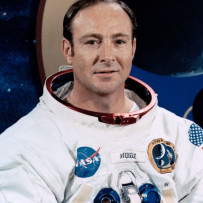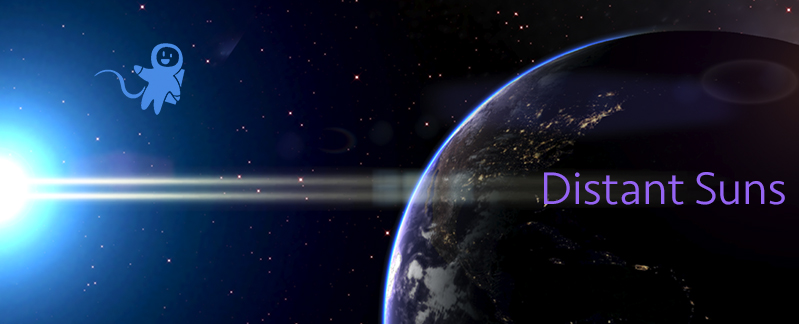Ed Mitchell and Apollo 14

The passing of Apollo 14 astronaut, Ed Mitchell, recently marks in a way, “the beginning of the end” of the Apollo era. As I write the I am listening to the air-to-ground audio of their mission, that occurred 45 years ago in February, 1971. Mitchell’s colleagues, commander and first American in space, Alan B. Shepard, and command-module pilot, Stu Roosa both passed away some time ago, leaving Ed as the sole representative of the third landing on the moon. But now the Apollo 14 crew are the first to have completely die off. As the youngest moonwalker is currently 80, Charlie Duke, we’ll see many such passings over the next few years, and the “era of the great voyages of discovery” (starting with Columbus) will truly be behind us.
The Apollo 14 mission flew Apollo 13’s intended flight profile. Scientists felt so strongly about the Fra Mauro landing site chosen for 13, it deserved a second billion dollar landing attempt. However Apollo 14 was a very slightly odd mission from beginning to the end. First off, the crew was virtually all rookie crew. The total cumulative flight time among them was bound up in Shepard’s 15 minute long ride in Freedom 7. Due to an inner-ear problem giving him vertigo, Shepard was taken off of active flight status until someone invented a cure. He migrated over to become second in command of the astronaut office, under another grounded astronaut, Deke Slayton.
After Mercury, the two-man Gemini program came into being to pioneer various techniques that would be needed for Apollo. Furthermore, it served as a training platform for future commanders of the Apollo missions. Out of the 11 flights, 10 were commanded by Gemini veterans. One was not. Apollo 14.

The backup crews of each mission would rotate into prime crew three flights away. Apollo 10’s backup was comprised of Gordon Cooper, who flew the last Mercury flight and was the first person to go into orbit twice, Donn Eisele, from Apollo 7, and Stuart Roosa, with Roosa the only rookie. This means the Cooper crew would have been the prime for Apollo 13. There is a lot of speculation as to why Cooper never flew, but it comes down to two main lines of thought: There was no plan to have Cooper&Co. actually move to a prime spot, as all of the other experienced astronauts were already assigned to prime or backup crews, a couple of “bench warmers” were tossed in for Apollo 10, with no actual intent of the entire crew to continue post-mission. The reason being that apparently both Cooper and Eisele didn’t impress anyone with their work ethic or decision making ability, befitting an Apollo commander. As a result, Al Shepard took Cooper’s slot, and Ed Mitchell, Donn Eisele’s. Roosa remained on the crew.
In my collection, I have Cooper’s training Apollo jacket from Apollo 10, and recently acquired a two page hand-written note explaining why he would have been a far better choice than Shepard.

With that behind them, the Apollo 14 flight was perhaps the most troublesome mission to actually make a landing. As NASA wasn’t willing to have another failed flight in a row, there was a lot of extra back-room hand wringing throughout most of the mission and a lot of issues that might have been mission ending before ’13, were worked through or just accepted as the high-cost of doing business. Ultimately all worked out in the end with a lot of clever engineering hacks or just plain-ol-luck. And while none of the issues were life-threatening, NASA’s traditional caution had to be relaxed for this one.
After a successful launch on Jan. 31, 1971, 8 ½ months after ’13, the first and most major issue cropped up: The crew could not dock with the lunar module Antares. Shortly after heading to the moon, the Command and Service Module (CSM) moves away from the Saturn V’s 3rd stage, the S-IVB, turns around and docks with the LM. But with ’14 the little capture-latches failed to close and the CSM started to drift back from Antares. If no docking can take place, there is no way for the crew to move into the LM, short of a possible space-walk. For nearly 2 hours, Stu Roosa attempted and reattempted the docking, finally getting a latch when ramming the CM into the LM and holding the thrusters on for a full 14 seconds after contact. Finally the latches fired and a hard-dock as achieved. While all this was fine and good, mission planners were concerned that the LM might not be able to dock after return from the lunar surface. There were emergency transfer procedures already on the books if this was not possible, but as inspection of the latches didn’t reveal the cause, Apollo 14 was cleared to continue on a landing mission. In the end, it was thought that some debris may have interfered with the latch system and it was finally dislodged on the final attempt.

Perhaps the most serious problem after docking was also likewise due to debris trapped inside a switch. This caused a short letting the main guidance computer think that the abort switch had been thrown, when it had not. Had this happened during descent, the landing would have automatically aborted, sending a very surprised crew back up to lunar orbit. Not good. The fix had the crew actually reprogram a jump around the abort code, to ignore that switch. Ingenious.
During landing, the crucial landing radar took far longer to lock on then it should have. Mitchell could be heard saying “Com’on radar. Com’on”. Without a good radar, both the altitude and velocity would be unknown. It finally popped on just in time, and lead to a successful landing at the same spot Aquarius should have landed with Jim Lovell and Fred Haise the previous year.
Lesser problems included a crack in the glass on one of their displays (broken glass could be very serious in zero-G if any shards floated away, Apollo 15 had a similar problem), poor communications with Shepard when preparing for the first EVA, failure of a very large and special mapping camera onboard the CM, and tracking problems with the high-gain antenna.
Perhaps the most interesting “failure” was the fact that the moon-walkers had a hard time judging exactly where they during their second spacewalk. The main target was a 1000 foot in diameter “Cone Crater.” The crew was to pick up samples along the rim and roll various rocks down into the crater itself (a great gig for any guy, rolling boulders into a big hole). Shepard’s 
The return flight was thankfully uneventful. Unfortunately the kinds of rocks that geologists had hope to find, did not show up in the sample containers, suggesting that Frau Mauro was not the best choice of a landing site. Also, a cassette of exposed film was inadvertently left behind.
Oh well.
Mitchell would become a fairly controversial character in his post-NASA days as a firm believer and promoter of metaphysics and UFOs, having actually conducted his own ESP experiments during the mission.
Kept next to my computer is a backpack strap worn by Ed Mitchell on both of his EVAs. While Apollo 14 was not my favorite of the flights (Apollos 8 and 15 were), it’s the one I have the most connection to, and so was heartbroken to hear of Ed’s passing.

